Each spring and summer I find myself basking in insect awe. In my Book of Shoulds, everyone should behold these masters of land and air who all have the same body plan: Head. Thorax. Abdomen.
Let's start with the Sedge Darner's head. That "face"--oh my--yellow-green mouth parts below darker bluish-green eyes. And a T-spot just below the eyes and thin black crossline lower down on the face. What a treat to meet this handsome guy.
And then there's the contrast of Halloween colors on the Great Golden Digger Wasp. Take a look at its thorax connected to the head. It actually consists of three segments, the prothorax, mesothorax, and metathorax, each supporting a pair of legs. It's hard to tell, but the front wings are attached to the prothorax, with the hind to the metathorax.
Meanwhile, upon another flower there's a view of the abdomen, the beginning of which is quite skinny on this Thread-waisted Wasp. How does that body function?
This female Blue Dasher offers a perfect stance to truly see the head, thorax, and abdomen. When trying to identify insects, coloration is important, as well as shape and placement.
Compound eyes provide complex vision with thousands of tiny lens creating an entire scene. Compared to a dragonfly's eyes, those on a butterfly like this Painted Lady are much smaller, but her clubbed antennae are much longer. Antennae are actually segmented sensory organs that function differently for each group of insects. They may be used for smell, taste, touch, air motion, or maybe even vibrations.
In the case of the freshly emerged Dog-day Cicada, the antennae are short, but the eyes bulge from the sides. And that camouflage coloration will be useful as this insect disappears into the treetops singing raspy love songs in an attempt to attract a mate, while trying not to be eaten by a predator.
Behold next the Robber Fly, this particular species with such a hairy body that it mimics a bee. Its proboscis, or mouthpart is rather beak-like, the easier to consume insects.
The Goldenrod Soldier Beetle can spend a long time actively pursuing pollen on one plant, as has been my experience in its presence. It's a similar body structure as a firefly, but the legs strike me as being much longer.
While I was focused on this Bumblebee seeking nectar with its tongue, an Ambush Bug lay in wait, hoping for a big, hairy meal of its own liking. It didn't succeed this time, but one of these days I'll spot the leftovers of an Ambush Bug's dinner.
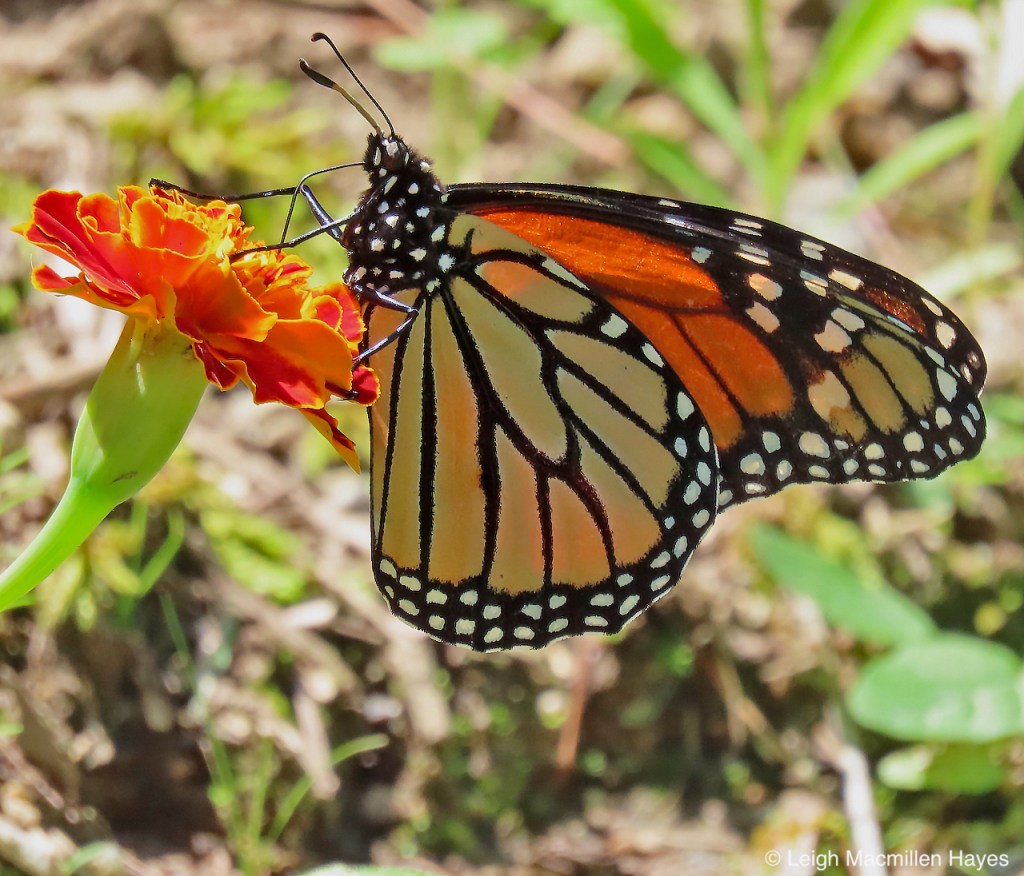
The first Monarch of the season, at least for me, was sipping from a Marigold with its super long straw-like proboscis. I've noted them before, but notice again the club-shaped antennae, a feature of a butterfly, unlike the feathery antennae of a moth.
The Silver-spotted Skipper is another butterfly, albeit much smaller than the Monarch. For such a small one, its eyes are huge and proboscis equally long, as it reached deep into the Wild Bergamot.
The Dog-day Cicada pictured earlier gave me a unique opportunity to look at its underside as it perched upon a broken stem. Do you see the zebra-striped design below its eyes and above its legs? That's the start of its mouthpart, which is tucked against its body until its decides to dine. Moments after this photo was taken, the Cicada made its first flight ascending high into the treetops.
The Great Black Wasp with its iridescent blue wings, offers a prime example of the amazing construction of insect legs. Insect legs have moveable joints between some segments. So here's how the song goes: The pretarsus (toe-like with one or two small hooked claws) is connected to the tarsus (foot-like), the tarsus is connected to the tibia (longest part of leg), the tibia is connected to the femur (largest and thickest), the femur is connected to the trochanter (kinda like a hip joint), the trochanter is connected to the coxa (joins body) the coxa is connected to the body! Now shake dem insect bones!
The fiercest looking legs are the lobster claws of the Ambush Bug, the better to snatch prey and hold it in position to suck its guts out.
Another incredible insect feature: wings. Muscles that work the wings are attached to the thorax. But how do such scaly membranes provide the gift of flight for such a robust looking body?
Even the much tinier Hover Fly is amazing as it flaps its wings so rapidly that they are almost invisible and can "hover" in place, much like a Hummingbird.

In the end, it all comes down to investing in the future by canoodling upon the flowers that nourish you and you help pollinate.
And then it's time to be like the Robber Fly and find a safe place that will protect you from the elements so you can take a rest. As August continues into September, my hope for you is that you'll spend a few moments basking in insect awe and develop or continue to nourish your own form of Bugmania.

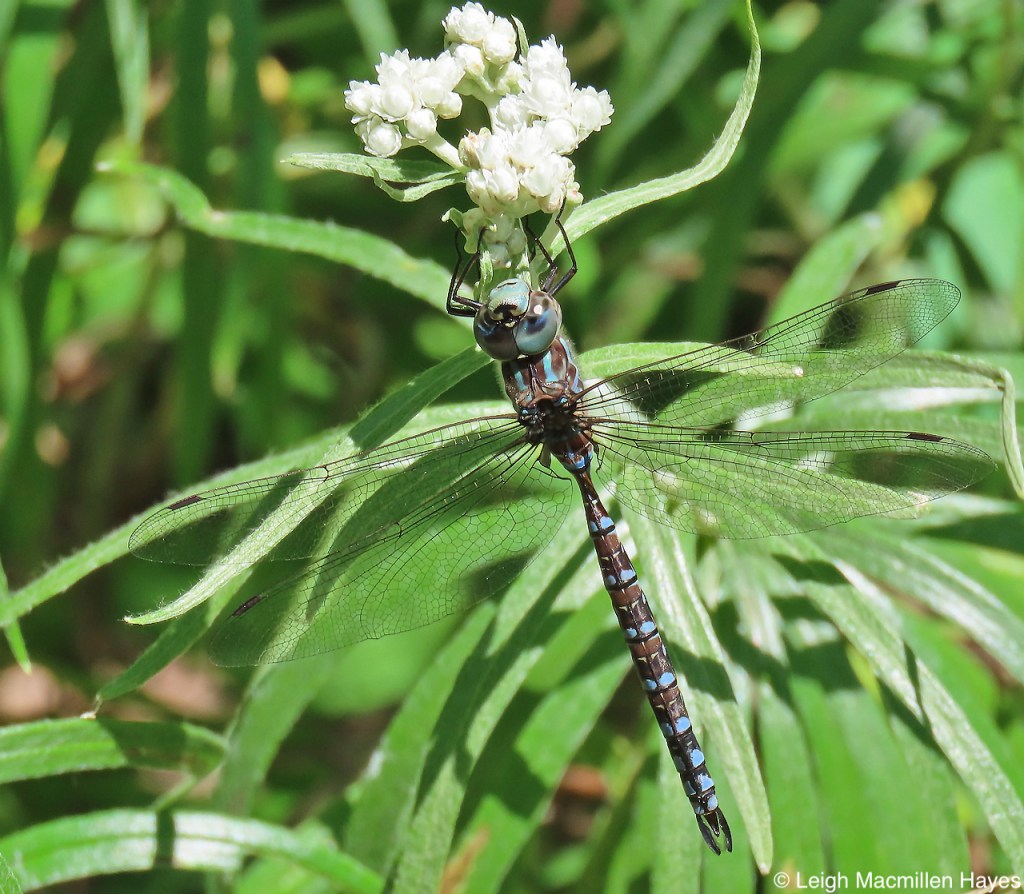
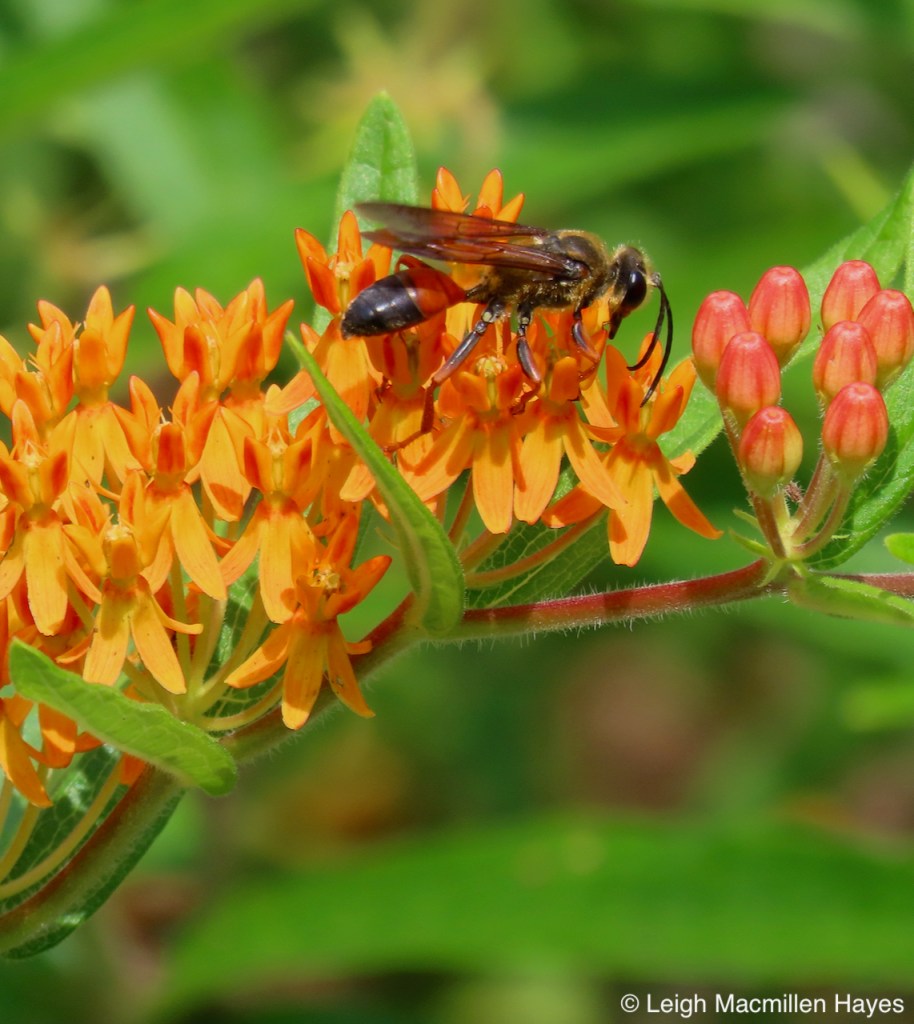
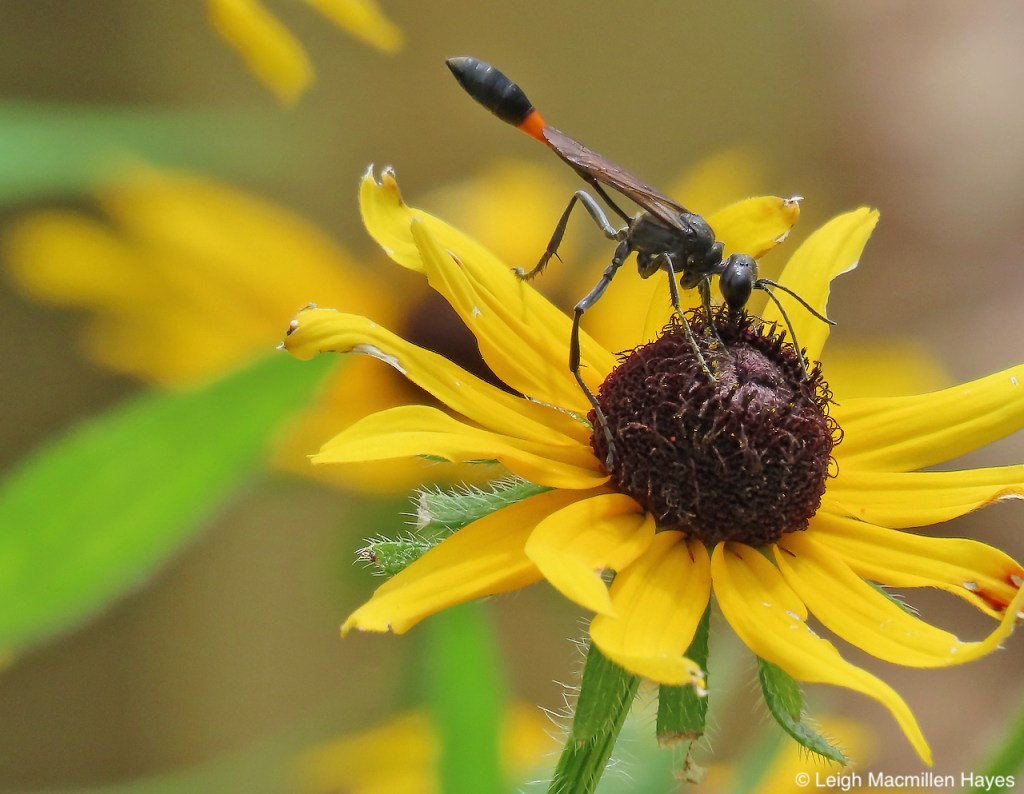
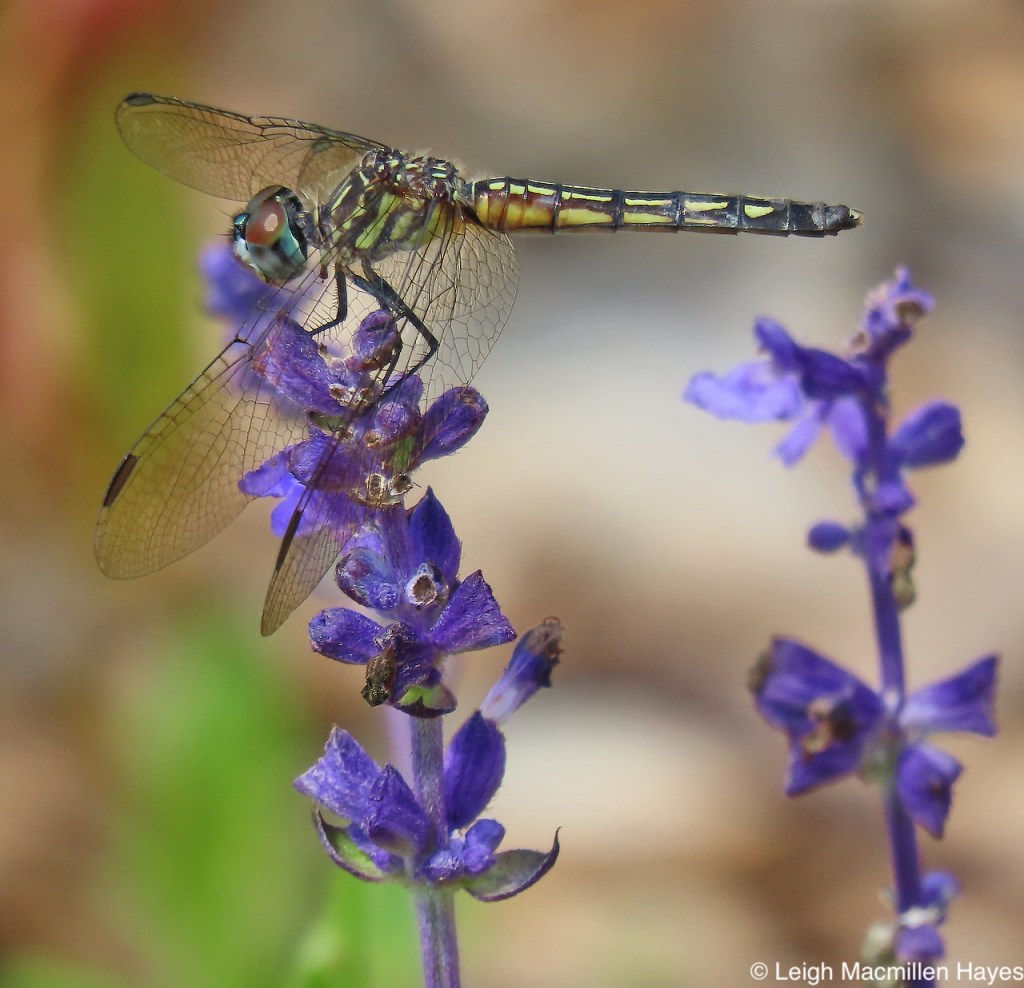




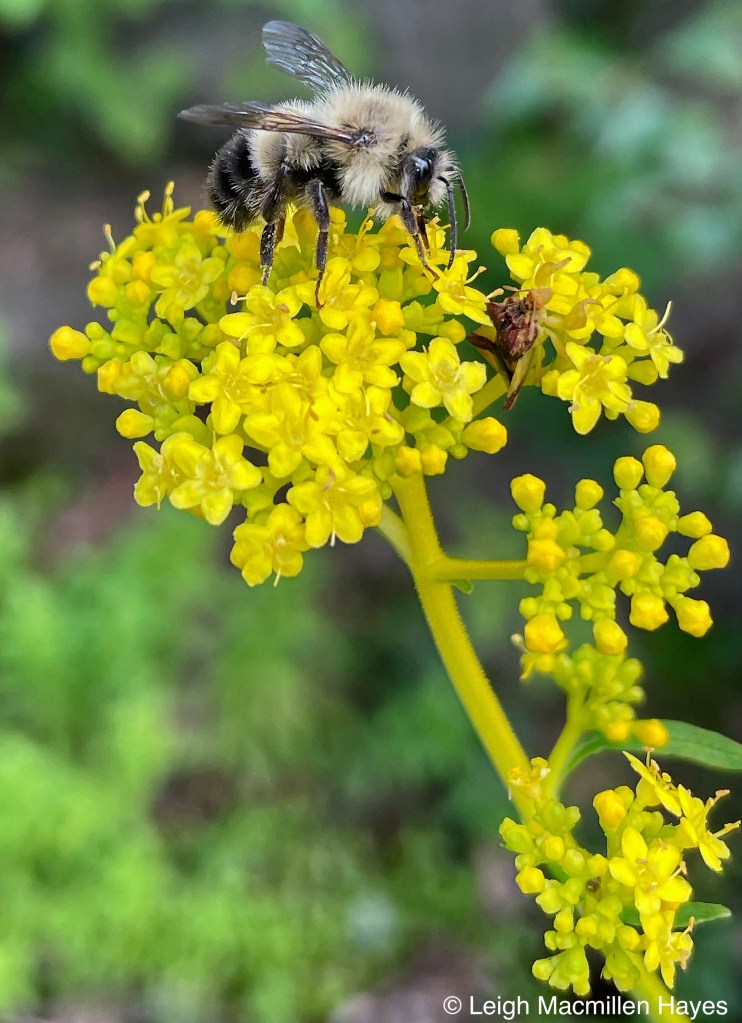



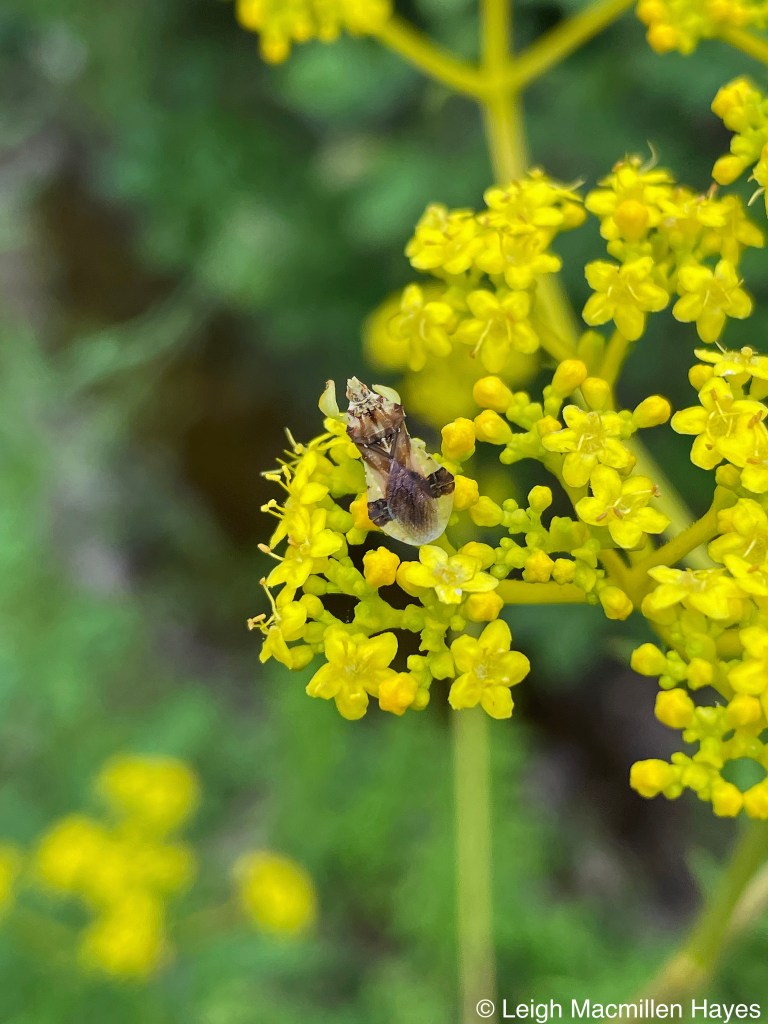
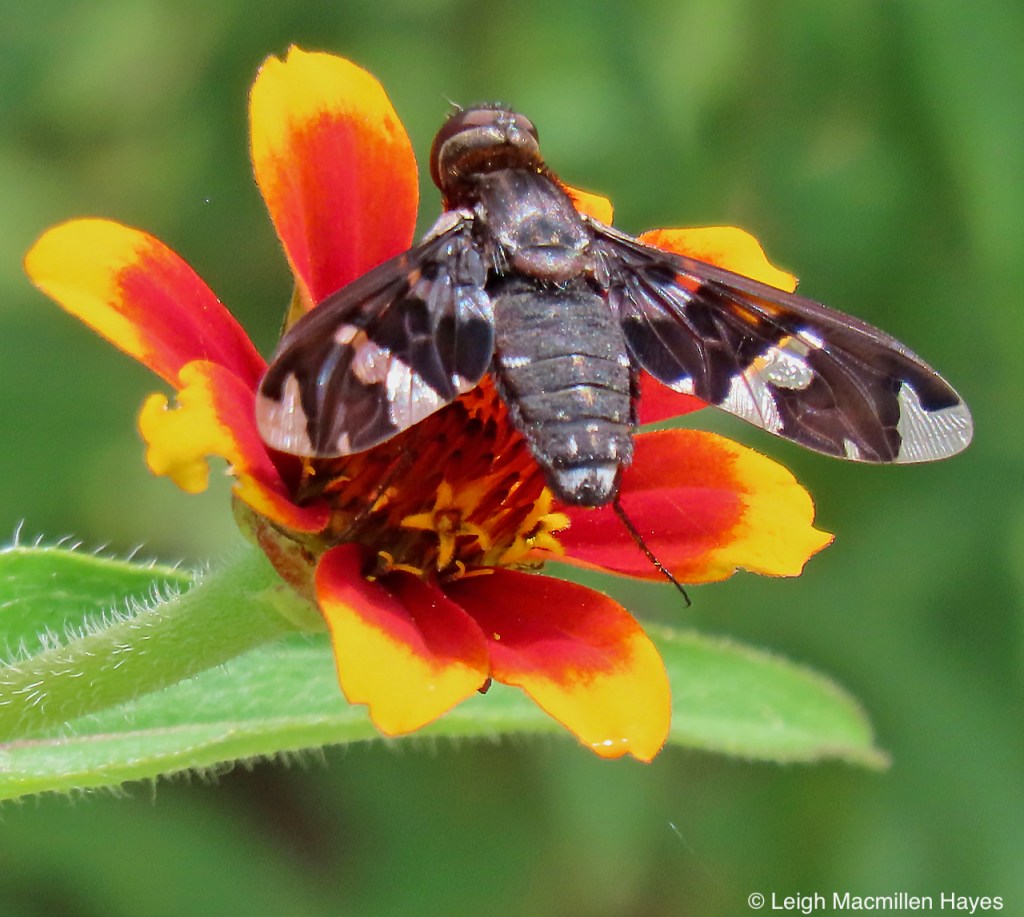

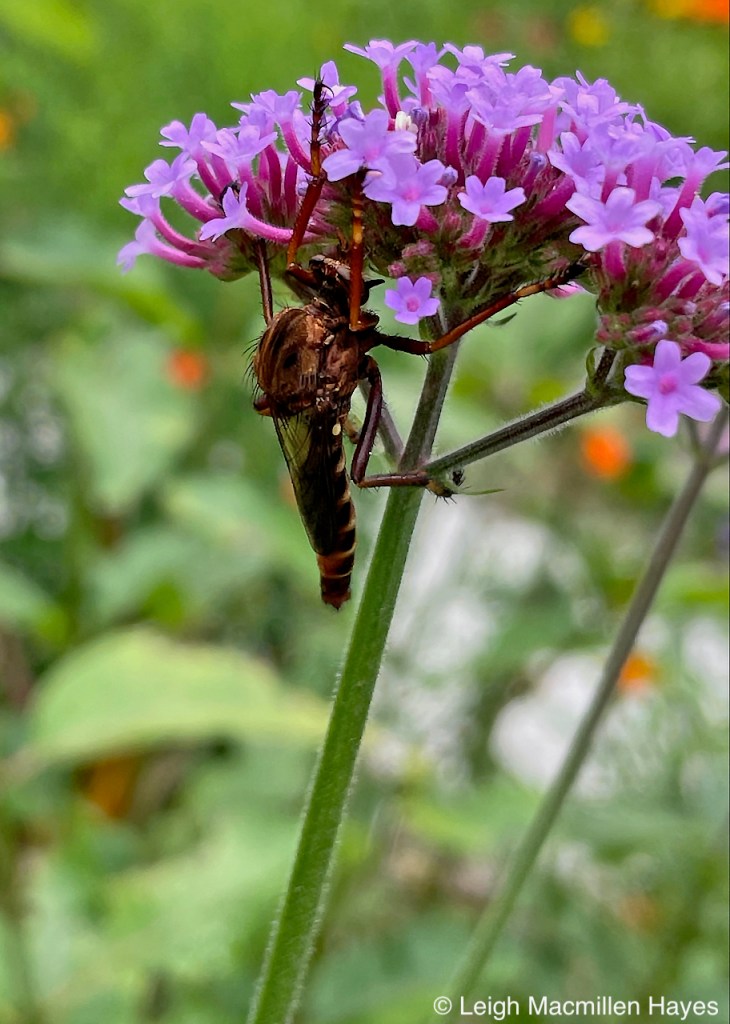
You must be logged in to post a comment.